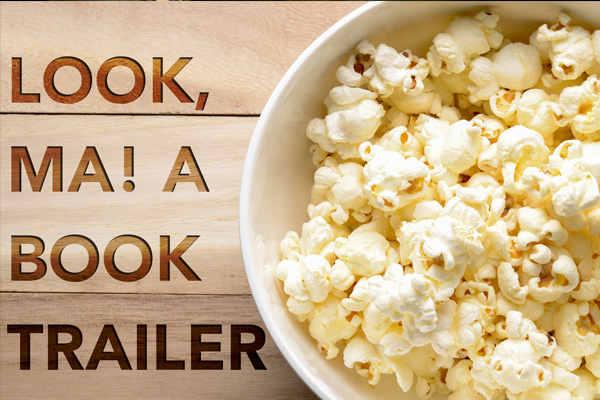What is a book trailer and how can I get one?
Book trailers have become a popular part of modern book marketing campaigns. Just like movie or television show trailers, they are a great way of creating buzz and excitement for your soon to be best-selling book. There are many approaches to creating a successful trailer and I’ll be sharing with you some of my ideas.
But do book trailers really work?
Heck Yes, they do! Readers just don’t read… they watch, listen and immerse themselves in the audio-visual nature of popular culture.We live in a multimedia engulfed society, and neglecting visual-audio presentation tool is a big disadvantage to anyone working towards a career in writing and the arts. You are after all a story teller… and creating trailers is just one way of enhancing your audiences experience and emotional connection with the story. In addition, book trailers are great tools for sharing via social media due to its “stickyness” factor.
So let’s get on with it.
First thing is coming up with a plan for your trailer. What kind of trailer are you thinking of creating? What is your budget?
In this post we’ll talk about the different kinds of book trailers. I’ve broken it down into three easy to digest categories.
Let’s take a look.
Live action book trailer
These are the type of trailers that we typically see in movies. You’ll be working with real actors, directors, and video editors to create this slick production. This trailer works great if you want to create a realistic portrayal of your story. Just like a movie, you will have to cast the right actor to portray your characters and find a production team who will transform your vision from paper to screen. Bad acting and sloppy filming can negatively impact your presentation. So you might want to stay away from your nephew with a camera phone (Unless you’re going for that gritty camera phone look).
Think of your costs when producing a live action trailer… you’ll need to budget for actors, make up, equipment, costumes, video editing & production time and even location.
Try reaching out to your publishing company first and see if this type of production is in the budget. The alternative is to reach out to freelance artists or smaller firms who can create your trailer without breaking the bank. This usually means you have to slim down on your visual effects and only film the main scenes that will create the best impact with your audience.
Some writers like to go this route because they can also use the trailer as a tool for pitching their books to movie studios or producers. Not a bad idea, if you ask me.
Graphical trailer
These trailers are primarily composed of typographic and graphic animations with music and voice overs. Think of a slideshow on steroids. You can still create a fantastic trailer without having to blow out your marketing budget. I see a lot of books opting this direction and have done it with great success.
Going this route doesn’t necessarily mean that your trailer has to be a canned production. You can still personalize the trailer by using your own images, photography, and music. And if you’re working with a really good video editor, he can add motion that will make your trailer come to life as good as a live action trailer.
Keep in mind that audio plays a large part in creating the atmosphere of your trailer. Using sound and music properly can “mask” certain elements that you don’t show on screen. For example, in movies they will often use the sound of airplanes to create a airport scene… without showing the airplane itself. Think creatively!
Animated trailers
Animated trailers are a little in between live action and graphic trailers. It’s a mix of motion and movement with the use of animated characters… yet it doesn’t necessarily mean that it takes less time or money to produce.
It is also specialized in a way that it will probably be more effective for certain types of books (for example, children’s books or graphic novels and comics). Instead of actors, you now have to animate drawn characters and background scenes.
If you’re trying to create this type of trailer for a book that doesn’t utilize existing artwork (such as comics), then you will need an artist who will translate your stories and characters into a visual medium. Artists varying styles can also affect the atmosphere of your trailer, make sure to find someone who can portray the emotions you want.
Another factor to consider is how much control you want over the direction of your trailer. If your publishing house is producing the book trailer, they might want to hire a professional team who will create a script that works best to sell your book.
If you’re doing it guerrilla style (that means indie), then you have more control over your production. But at the same time you take on more of the burden and the responsibility for the end result — good or bad. Not everyone can be a director, yet with enough studying and dissection of existing trailers, you’ll slowly see the formula on how it’s done.
In the next blog post, I’ll talk a little bit more about the process of creating book trailers!
Support this site by getting my new book here: http://www.thestumpsbook.com/ on Amazon: http://amzn.to/1kMPcne
“The Stumps of Flattop Hill”



